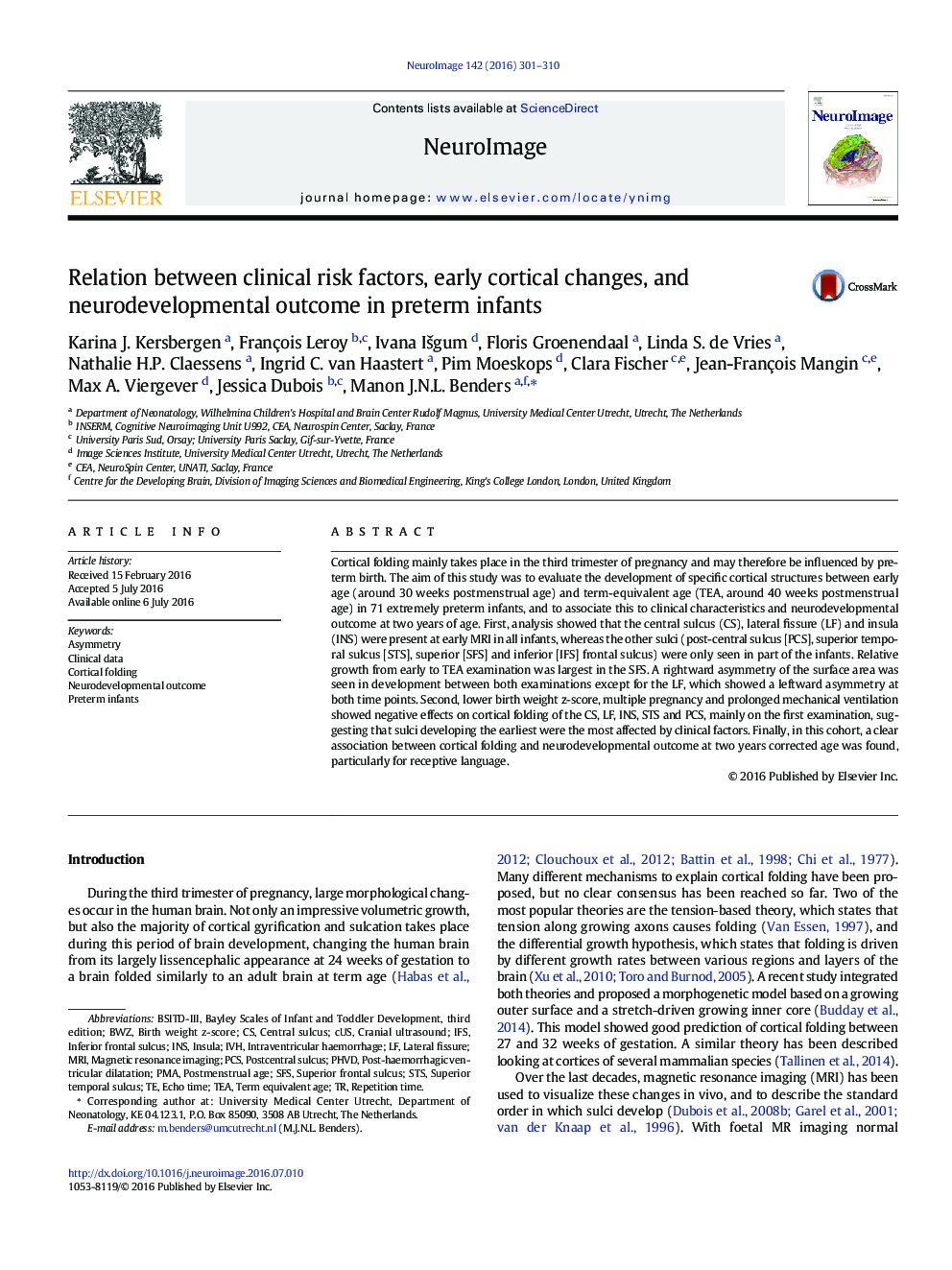| Article ID | Journal | Published Year | Pages | File Type |
|---|---|---|---|---|
| 5631439 | NeuroImage | 2016 | 10 Pages |
Cortical folding mainly takes place in the third trimester of pregnancy and may therefore be influenced by preterm birth. The aim of this study was to evaluate the development of specific cortical structures between early age (around 30Â weeks postmenstrual age) and term-equivalent age (TEA, around 40Â weeks postmenstrual age) in 71 extremely preterm infants, and to associate this to clinical characteristics and neurodevelopmental outcome at two years of age. First, analysis showed that the central sulcus (CS), lateral fissure (LF) and insula (INS) were present at early MRI in all infants, whereas the other sulci (post-central sulcus [PCS], superior temporal sulcus [STS], superior [SFS] and inferior [IFS] frontal sulcus) were only seen in part of the infants. Relative growth from early to TEA examination was largest in the SFS. A rightward asymmetry of the surface area was seen in development between both examinations except for the LF, which showed a leftward asymmetry at both time points. Second, lower birth weight z-score, multiple pregnancy and prolonged mechanical ventilation showed negative effects on cortical folding of the CS, LF, INS, STS and PCS, mainly on the first examination, suggesting that sulci developing the earliest were the most affected by clinical factors. Finally, in this cohort, a clear association between cortical folding and neurodevelopmental outcome at two years corrected age was found, particularly for receptive language.
